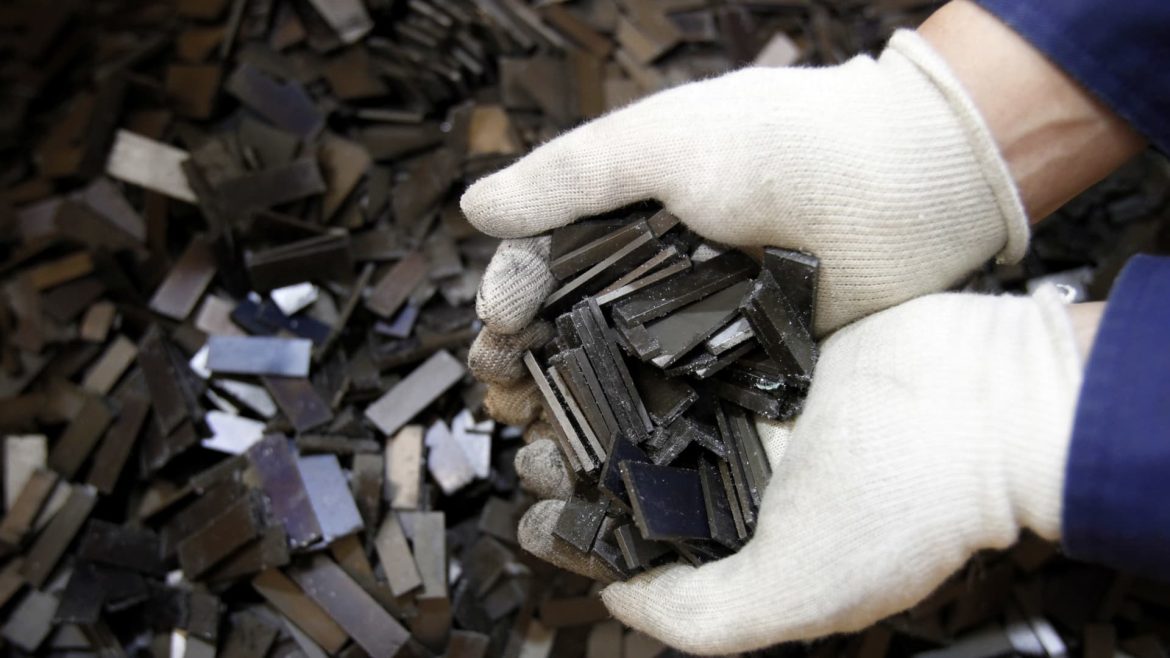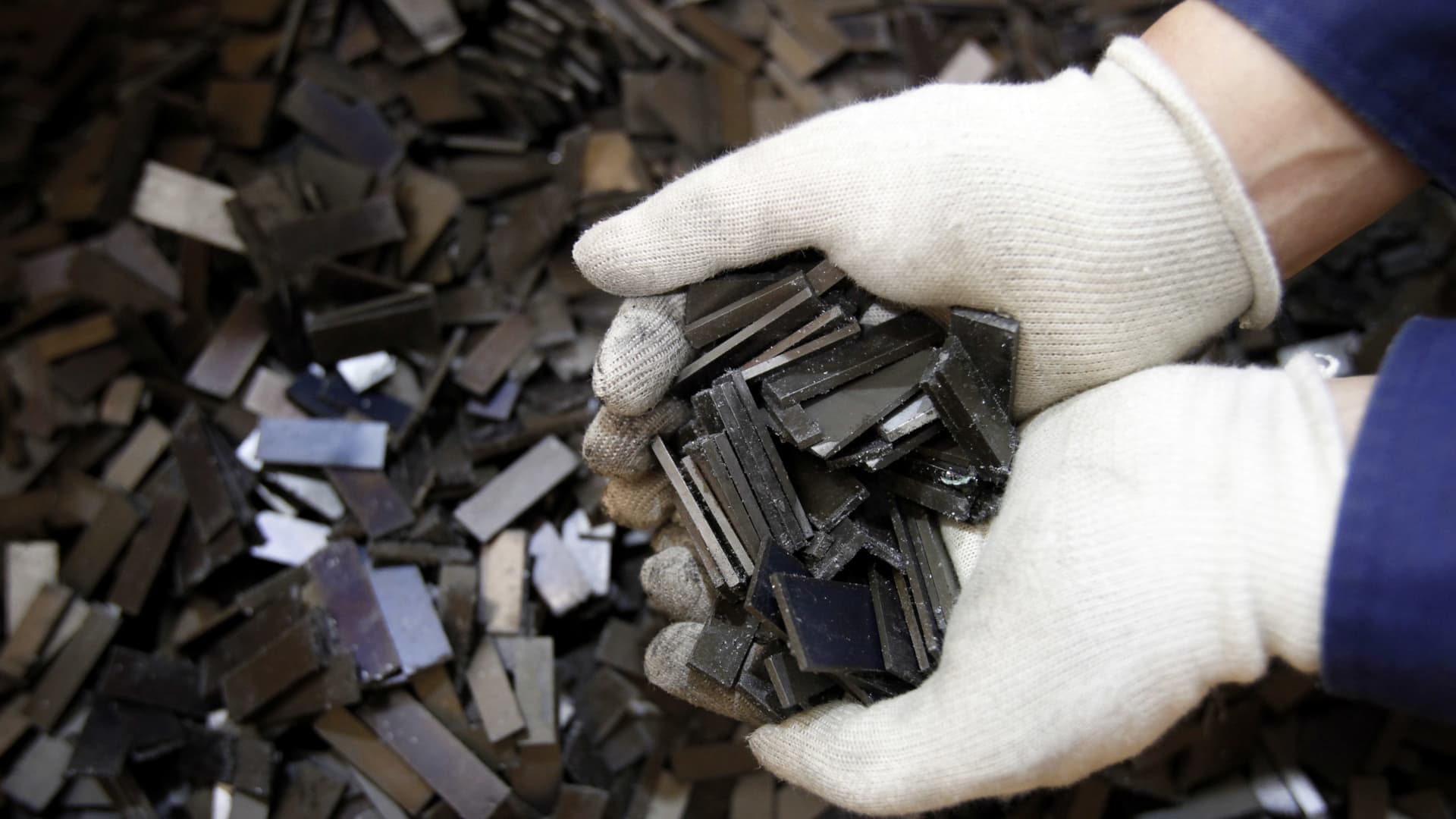The Rare Earth Magnet Surge: A Delicate Dance Between Demand, Dependence, and Geopolitics
Introduction: The Unseen Backbone of Modern Technology
In the intricate web of global trade and technological advancement, few resources wield as much influence as rare earth magnets. These unassuming yet powerful components are the unsung heroes of modern industry, enabling everything from smartphones to defense systems. The recent surge in rare earth magnet exports from China to the United States—a staggering 660% increase in June—has sent shockwaves through industries and policymakers. This phenomenon is not merely a statistical anomaly but a symptom of deeper geopolitical tensions, supply chain vulnerabilities, and the strategic importance of these critical materials. Understanding this surge requires a comprehensive examination of the rare earth element market, the factors driving this trend, and its implications for the United States and the broader global landscape.
Understanding Rare Earth Magnets and Their Significance
The Science Behind the Magnets
Rare earth elements (REEs) are a set of seventeen metallic elements that possess unique magnetic, luminescent, and catalytic properties. Despite their name, these elements are not particularly rare in terms of abundance in the Earth’s crust. However, their dispersed distribution and the complexities of extraction make them economically scarce. Among these elements, neodymium, praseodymium, dysprosium, and terbium are particularly important for magnet production.
Neodymium-iron-boron (NdFeB) magnets, a type of permanent magnet made from rare earth elements, are exceptionally strong for their size and weight. These magnets are not just a commodity; they are a linchpin of modern technology. Their unique properties allow them to generate powerful magnetic fields in compact sizes, making them indispensable in various applications.
The Ubiquity of Rare Earth Magnets
The pervasive use of rare earth magnets across diverse sectors underscores their strategic importance. Any disruption to their supply chain can have cascading effects on multiple industries and even national security. The following sectors are particularly reliant on rare earth magnets:
- Electric Vehicles (EVs): NdFeB magnets are used in the motors that power EVs, directly impacting their performance and efficiency. As the global push for sustainable transportation accelerates, the demand for these magnets is expected to skyrocket.
- Wind Turbines: These magnets are crucial for the generators in wind turbines, enabling the conversion of wind energy into electricity. The growth of renewable energy infrastructure is driving up demand for rare earth magnets.
- Consumer Electronics: From smartphones to headphones, rare earth magnets are found in speakers, microphones, and hard drives. The consumer electronics industry is a significant consumer of these magnets, with demand growing alongside technological advancements.
- Defense Systems: Guidance systems, radar, and other military technologies rely on the unique properties of rare earth magnets. National security concerns are heightened by the dependence on foreign sources for these critical materials.
- Medical Devices: MRI machines and other advanced medical equipment utilize these magnets for precise imaging and diagnostics. The healthcare industry’s reliance on rare earth magnets underscores their importance in saving lives and improving patient outcomes.
The Chinese Grip on Rare Earths: A Legacy of Dominance
Historical Context and Strategic Investments
China’s dominance in the rare earth element market is not accidental; it is the result of deliberate policy decisions, strategic investments, and a willingness to accept the environmental costs associated with rare earth mining and processing. Several factors contribute to China’s strong position:
- Abundant Reserves: China possesses some of the world’s largest reserves of rare earth elements, providing a natural advantage. The Bayan Obo deposit in Inner Mongolia, for example, is one of the largest rare earth deposits globally.
- Lower Production Costs: Lower labor costs, less stringent environmental regulations, and government subsidies have allowed Chinese companies to produce rare earth elements at a lower cost than competitors. This cost advantage has enabled China to undercut other producers in the global market.
- Advanced Processing Capabilities: China has invested heavily in developing advanced technologies for extracting, refining, and processing rare earth elements, giving it a competitive edge in the value chain. The country’s expertise in rare earth processing is unparalleled, making it difficult for other nations to compete.
- Integrated Supply Chain: China has built a comprehensive and integrated supply chain, from mining and processing to magnet manufacturing, further solidifying its dominance. This vertical integration allows China to control every aspect of the rare earth supply chain, from raw materials to finished products.
Geopolitical Leverage and Trade Tensions
This near-monopoly has given China significant leverage in international trade and geopolitics. Concerns about China’s potential to use its control over rare earth elements as a political weapon have grown in recent years, particularly as trade tensions with the U.S. have escalated. In 2010, for example, China temporarily restricted rare earth exports to Japan amid a territorial dispute, highlighting the strategic importance of these materials.
The reported 660% surge in rare earth magnet exports from China to the U.S. in June is a complex phenomenon with multiple contributing factors. The most immediate explanation appears to be the easing of trade tensions and the granting of export permits following trade talks between the two countries. This suggests that previous restrictions or delays in approvals were hindering the flow of these critical materials.
However, the surge is likely also driven by pent-up demand from U.S. firms. Facing the prospect of future export restrictions or supply disruptions, companies may have been scrambling to secure their supplies of rare earth magnets. This stockpiling behavior would amplify the increase in imports observed in June.
Furthermore, the global demand for rare earth magnets is increasing rapidly, driven by the growing adoption of electric vehicles and renewable energy technologies. This increased demand is putting pressure on the existing supply chain, making U.S. firms even more eager to secure their access to these critical materials.
Implications for the United States: Vulnerability and Opportunity
The Risks of Dependence
The surge in rare earth magnet exports highlights both the vulnerability and the potential opportunities for the United States. The country’s heavy reliance on China for these critical materials exposes it to significant risks:
- Supply Chain Disruptions: Any disruption to the flow of rare earth magnets from China could cripple key industries in the U.S., including automotive, renewable energy, and defense. The fragility of the supply chain is a major concern for U.S. manufacturers and policymakers.
- Price Volatility: China’s control over the market allows it to manipulate prices, potentially harming U.S. manufacturers and consumers. The volatility in rare earth prices can create uncertainty and instability in the global market.
- National Security Concerns: Dependence on a foreign power for critical materials raises national security concerns, particularly in the context of growing geopolitical competition. The U.S. must ensure that its access to rare earth magnets is not compromised by political tensions or conflicts.
Building a Resilient Supply Chain
However, the situation also presents opportunities for the U.S. to reduce its dependence on China and build a more resilient domestic rare earth supply chain. The following strategies can help achieve this goal:
- Investment in Domestic Production: The U.S. government and private companies are investing in developing domestic rare earth mining, processing, and magnet manufacturing capabilities. Projects such as the Mountain Pass mine in California and the Round Top project in Texas are examples of efforts to revive domestic production.
- Diversification of Supply Sources: Efforts are underway to diversify the sources of rare earth elements by developing projects in other countries, such as Australia, Canada, and Brazil. This diversification can reduce reliance on any single country and create a more stable supply chain.
- Recycling and Re-use: Developing technologies for recycling rare earth magnets from discarded electronics and wind turbines can reduce the need for newly mined materials. Recycling can also help mitigate the environmental impact of rare earth mining.
- Innovation and Substitution: Research is being conducted to develop alternative materials and technologies that can reduce or eliminate the need for rare earth magnets in certain applications. For example, researchers are exploring the use of ferrite magnets, which do not contain rare earth elements, as a potential substitute.
- Policy Support: Supportive government policies, such as tax incentives, streamlined permitting processes, and research funding, can encourage the development of domestic rare earth projects. The Biden-Harris Administration has expressed a strong commitment to securing U.S. supply chains for critical goods, including rare earth elements and magnets.
A Path Forward: Building Resilience and Diversification
Strategic Investments and Policy Support
The surge in rare earth magnet exports from China to the U.S. is a wake-up call, underscoring the urgent need for a more resilient and diversified supply chain. The U.S. must take decisive action to reduce its dependence on China and secure its access to these critical materials. This requires a multi-faceted approach that includes:
- Strategic Investments: Government and private sector investments in domestic rare earth mining, processing, and magnet manufacturing are essential to building a complete and competitive supply chain. These investments can help create jobs, stimulate economic growth, and ensure a stable supply of critical materials.
- Policy Support: Supportive government policies, such as tax incentives, streamlined permitting processes, and research funding, can encourage the development of domestic rare earth projects. Policymakers must prioritize the security of critical supply chains and provide the necessary support to achieve this goal.
- International Cooperation: Collaborating with allies and partners to diversify supply sources and develop alternative technologies can reduce reliance on any single country. International cooperation can also help create a more stable and transparent global market for rare earth elements.
- Innovation and Research: Investing in research and development to improve recycling technologies, find substitute materials, and develop more efficient magnet designs can reduce the overall demand for rare earth elements. Innovation can help mitigate the environmental and geopolitical risks associated with rare earth mining.
- Responsible Sourcing: Promoting responsible mining practices and environmental stewardship can ensure that the rare earth supply chain is sustainable and ethical. Responsible sourcing can also help build public trust and support for domestic rare earth projects.
The Magnet’s Pull: Shaping a New Global Order
The Geopolitical Implications
The surge in rare earth magnet exports from China to the U.S. is more than just a trade statistic; it is a symptom of a larger geopolitical shift. As the world transitions to a more sustainable and technologically advanced economy, the control of critical resources like rare earth elements will become increasingly important. The nation that can secure access to these resources and develop innovative technologies will be best positioned to lead the way in the 21st century.
The U.S. now faces the challenge of transforming its vulnerabilities into advantages, fostering innovation, and building a resilient rare earth supply chain that can support its economic and national security interests for decades to come. The dance of dependence and the drive for independence will continue to shape the global order, with rare earth magnets playing a central role in this complex choreography.
Conclusion: A Call to Action
The rare earth magnet surge is a clarion call for the United States to prioritize the security of its critical supply chains. The country’s dependence on China for these vital materials is a strategic vulnerability that must be addressed urgently. By investing in domestic production, diversifying supply sources, and fostering innovation, the U.S. can build a more resilient and sustainable rare earth supply chain. The path forward requires a concerted effort from government, industry, and academia to ensure that the U.S. remains a global leader in technology and innovation. The magnet’s pull is undeniable, and the nation that can harness its power will shape the future of the global economy. The time to act is now.





